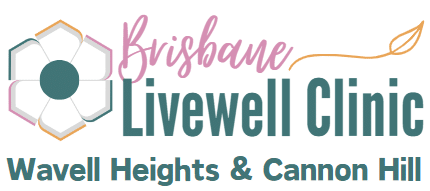Understanding Bowen Therapy
Bowen therapy, also known as the Bowen technique, is a holistic remedial body technique that focuses on the mechanoreceptors and soft connective tissue in the body. Created by Thomas Ambrose Bowen in Australia in the 20th century, this therapy aims to promote pain relief and recovery by gently stretching the fascia.
Origins of Bowen Therapy
Thomas Ambrose Bowen, born in 1916, developed the Bowen technique in Australia. Bowen had a deep interest in the human body and its ability to heal itself. He observed that specific movements and techniques could stimulate the body's healing response and promote pain relief. Throughout his career, Bowen refined his technique, ultimately creating what is now known as Bowen therapy.
Mechanism of Bowen Therapy
Bowen therapy works on the principle that the body is a complex system, and treating the root cause of a problem is essential for long-term relief. Rather than focusing solely on specific symptoms or named diseases, Bowen therapy takes a holistic approach to address the body as a whole (Bardley Bowen).
The therapy targets the mechanoreceptors and soft connective tissue, including muscles, tendons, ligaments, fascia, and skin. By gently manipulating these areas, Bowen therapy aims to stimulate the autonomic nervous system, potentially inhibiting the sympathetic nervous system and activating the parasympathetic nervous system. This activation can aid in reducing pain and promoting relaxation.
A key principle of Bowen therapy is that the structure of the body governs its function, and maintaining optimal function helps to maintain the body's structure. By addressing compensation patterns caused by acute or chronic injuries, Bowen therapy aims to restore balance and alleviate tension in the body (Bardley Bowen). This approach makes Bowen therapy suitable for treating various musculoskeletal or neuromuscular complaints, ranging from acute sports injuries to chronic conditions (Better Health Victoria).
While Bowen therapy is increasingly popular and widely practiced, scientific evidence supporting its benefits is still limited. Most of the evidence available is anecdotal or based on smaller studies. However, many individuals have reported positive experiences and relief from pain through this therapy. If you are considering Bowen therapy, it is essential to consult with a qualified bowen therapist to determine if it may be suitable for your specific needs.
Benefits and Applications
Bowen therapy, also known as the Bowen technique, has gained popularity as a holistic approach to pain relief and recovery. This gentle and non-invasive therapy can be used to address various conditions and injuries. Let's explore some of the benefits and applications of Bowen therapy.
Pain Relief and Motor Function
One of the primary applications of Bowen therapy is pain relief. This therapy aims to alleviate pain by targeting specific areas of tension or dysfunction in the body. By applying gentle, rolling movements over these areas, Bowen therapists aim to stimulate the body's natural healing response.
Bowen therapy has been reported to offer pain reduction for conditions such as migraines, frozen shoulder, and back pain. In fact, a double-blind, randomized controlled trial found that individuals who received Bowen therapy experienced significantly lower pain scores compared to those who received a sham treatment (Source). Additionally, studies have shown that Bowen therapy may be beneficial for individuals with chronic illnesses, such as multiple sclerosis, by reducing symptoms and improving overall well-being (PubMed).
Furthermore, Bowen therapy has been associated with improvements in motor function. This therapy may help address issues related to mobility and range of motion. By releasing tension and restoring balance within the body, Bowen therapy can support improved movement and flexibility.
Complementary Treatment Options
Bowen therapy can also be used as a complementary or alternative treatment alongside conventional medical approaches. It is often utilized in conjunction with other therapies, such as physiotherapy, chiropractic care, or massage, to enhance overall well-being and support the body's natural healing processes.
When considering Bowen therapy as a complementary treatment, it's important to consult with qualified healthcare professionals who can provide personalized advice based on your specific needs. They can help determine if Bowen therapy is a suitable addition to your existing treatment plan and guide you through the process.
It's worth noting that while proponents of Bowen therapy report positive results and consider it safe for individuals of all ages, scientific data regarding its effectiveness are limited and mixed (Medical News Today). Further research is needed to fully understand the mechanisms of action and potential benefits of Bowen therapy.
If you're interested in exploring Bowen therapy as a potential option for pain relief and recovery, it's recommended to seek a qualified Bowen therapist or Bowen therapy clinic. They can provide personalized guidance and tailor the therapy to your specific needs, helping you embark on a journey towards improved well-being.
Scientific Evidence
When it comes to scientific evidence supporting the effectiveness of Bowen therapy, limited research has been conducted thus far. Although there is ongoing interest in the field, further studies are needed to comprehensively understand the benefits and mechanisms of this therapy.
Limited Research on Effectiveness
While there is a lack of extensive scientific proof, some studies suggest potential benefits of Bowen therapy for pain relief, flexibility, and motor function. However, it is essential to note that these studies are limited in number and size, making it challenging to draw definitive conclusions.
Of the 309 citations obtained in a review, only 15 articles met the inclusion criteria for Bowenwork studies. These studies encompass various types, including randomized clinical trials, quasi-experimental studies, mixed methods research, cross-sectional studies, and case studies.
Studies on Pain Reduction and Mobility
Among the studies reviewed, over half of them (53%) reported that Bowenwork was effective for pain reduction, while 33% reported improved mobility as a result of the treatment. This suggests that Bowen therapy may offer a noninvasive and potentially affordable complementary approach to pain management and mobility improvement.
Furthermore, specific studies have highlighted the effectiveness of Bowen therapy in relieving symptoms experienced by individuals with chronic illnesses such as multiple sclerosis (PubMed). Additionally, Bowenwork has shown promise in providing pain reduction for conditions like frozen shoulder and migraines, offering potential relief without invasive procedures.
While these initial findings are encouraging, it is important to acknowledge that more extensive research is necessary to validate these results and gain a deeper understanding of the long-term effects and applications of Bowen therapy.
As research in the field continues to progress, it is advisable to consult with a qualified Bowen therapist to discuss individual needs and expectations. They can provide personalized guidance based on their professional expertise and experience. Remember to always consult with a healthcare professional for comprehensive advice regarding your specific condition or concerns.
Bowen Therapy Sessions
When it comes to Bowen therapy sessions, the duration and process can vary depending on individual needs and the specific practitioner. However, there are some general guidelines to give you an idea of what to expect.
Duration and Process
A typical Bowen therapy session lasts between 30 minutes to 1 hour. During this time, a trained Bowen practitioner, also known as a Bowenworker or Bowen therapist, will perform sequences of small, gentle moves at specific locations on your body. These moves involve light, cross-fiber maneuvers of muscles, tendons, or ligaments without forceful manipulation. The therapy can be administered through light clothing, offering a pleasant and non-invasive experience.
It's important to note that relief can often be experienced after the first session, and significant resolution or recovery is possible within three sessions. However, chronic conditions or recurring injuries might require additional treatments. The number of sessions needed will depend on individual factors and the nature of the condition being treated.
Side Effects and Healing Process
Bowen therapy is generally considered safe and gentle, with minimal side effects. Some individuals may experience temporary sensations such as warmth, tingling, or a sense of deep relaxation during or after the session. These sensations are normal and typically subside quickly.
It's important to listen to your body and communicate with your Bowen therapist if you experience any discomfort during the session. They can make adjustments and tailor the treatment to your specific needs.
After a Bowen therapy session, it's common to experience a sense of relaxation and well-being. However, it's important to note that individual responses to Bowen therapy may vary. Some people may notice immediate improvements, while others may experience gradual changes over time.
To support the healing process, it's recommended to stay hydrated, engage in gentle activities, and avoid strenuous exercises immediately after the session. Your Bowen therapist may also provide specific aftercare instructions tailored to your needs.
Remember, Bowen therapy is a holistic approach that aims to stimulate your body's natural healing mechanisms. It's always advisable to consult with a qualified Bowen therapist to discuss your specific condition and create a personalized treatment plan.
For more information on Bowen therapy and its applications, you can visit our article on what is Bowen therapy. If you're considering Bowen therapy, it's important to find a qualified and experienced Bowen therapist near you to ensure safe and effective treatment.
Effectiveness and Recommendations
When considering the effectiveness of Bowen therapy, it's important to distinguish between anecdotal reports and scientific data. While proponents of Bowen therapy often report positive results and consider it safe for individuals of all ages, scientific evidence regarding its effectiveness is limited and mixed. Therefore, it's essential to approach Bowen therapy with an open mind and consider individual experiences alongside available research.
Anecdotal Reports vs. Scientific Data
Bowen therapy has gained popularity based on anecdotal reports of pain relief and improved mobility. However, limited scientific research has been conducted to fully understand its effects. Studies on Bowen therapy have been relatively small in scale and varied in terms of study design, including randomized clinical trials, quasi-experimental studies, mixed methods research, cross-sectional studies, and case studies.
While there is a lack of extensive scientific data, some studies suggest potential benefits of Bowen therapy for pain reduction, flexibility, and motor function. For example, a double-blind, randomized controlled trial involving individuals with chronic pain found that the group receiving real Bowen therapy had significantly lower pain scores compared to the sham group after one week. Additionally, Bowen therapy has shown promise in providing pain reduction for conditions such as frozen shoulder and migraines, making it a potential noninvasive and affordable complementary approach to improving health.
More extensive research is needed to understand the long-term effects of Bowen therapy and its effectiveness for various conditions. Future studies should investigate if longer or tapered courses of Bowen therapy can provide a longer therapeutic effect and explore possible changes in psychological function and quality of life. Despite the limited scientific evidence, many individuals continue to find value in Bowen therapy as a complementary treatment option.
Long-Term Effects and Recommendations
Given the limited research on Bowen therapy's long-term effects, specific recommendations are challenging to make. However, based on existing studies, Bowen therapy may offer short-term pain reduction and improvements in mobility for certain conditions. It is important to consult with a qualified healthcare professional or a licensed Bowen therapist to discuss individual circumstances and determine if Bowen therapy is suitable.
When considering Bowen therapy, it is crucial to keep realistic expectations and be open to the possibility that results may vary. Results can depend on factors such as the individual's condition, the skill and experience of the therapist, and the overall treatment plan. It may be beneficial to explore other treatment options alongside Bowen therapy, such as physical therapy, exercise, or other complementary approaches, to maximize potential benefits.
Remember to seek a qualified and experienced Bowen therapist who has undergone proper training and certification in Bowen therapy. They can provide guidance and tailor the treatment to individual needs. Prior to starting any new therapy, it is always advisable to consult with a healthcare professional to ensure it aligns with your specific health needs and goals.
While the scientific evidence on Bowen therapy may be limited, many individuals have reported positive experiences and improvements in their well-being. Exploring Bowen therapy as part of a holistic approach to pain relief and recovery may be worth considering, especially when supervised by trained professionals.
Bowen Therapy Principles
Bowen Therapy is a holistic remedial body technique that focuses on the principles of a holistic approach and the root cause treatment approach. Understanding these principles can help you grasp the essence of this therapy and its potential benefits.
Holistic Approach and Mechanoreceptors
Bowen Therapy takes a holistic approach to healing, treating the body as a whole rather than focusing solely on named diseases. It aims to uncover the root cause of the problem, which may not always be directly related to the site of pain or dysfunction reported by the client. By addressing the body as a whole, Bowen Therapy considers the interconnectedness of various body systems and their impact on overall health and well-being.
One of the key components of Bowen Therapy is its emphasis on mechanoreceptors. Mechanoreceptors are sensory receptors located in the muscles, tendons, and fascia of the body. They play a vital role in providing feedback to the brain about the body's position, movement, and tension. By targeting these mechanoreceptors through gentle, specific movements and manipulations, Bowen Therapy aims to stimulate the body's natural healing response.
The gentle rolling movements of Bowen Therapy work to stimulate the mechanoreceptors, sending signals to the brain and allowing it to reset and rebalance the body. This can help alleviate tension, improve range of motion, and promote overall relaxation and well-being.
Root Cause Treatment Approach
Bowen Therapy adopts a root cause treatment approach, focusing on uncovering and addressing the underlying causes of pain or dysfunction rather than solely treating the symptoms. This approach acknowledges that the body is a complex system with interconnected structures and functions.
By identifying and treating the root cause of the problem, Bowen Therapy aims to restore balance and alleviate tension in the body. This approach can be particularly beneficial for individuals with acute or chronic injuries, as well as those experiencing compensation patterns in the body due to imbalances caused by injury or other factors.
While Bowen Therapy does not diagnose conditions or alter existing medications, a Bowen therapist can evaluate your body's condition on the treatment day and provide suggestions and recommendations to facilitate long-term resolution in conjunction with the therapy (Bardley Bowen). This collaborative approach allows you to actively participate in your healing journey and make informed decisions about your health.
Bowen Therapy's root cause treatment approach, combined with its holistic perspective and focus on mechanoreceptors, make it a unique and gentle therapy option for addressing musculoskeletal or related neurological issues. It is suitable for individuals of all ages, from newborns to the elderly, and can be used in conjunction with other treatment modalities for comprehensive care.
When seeking Bowen Therapy, it is important to choose a qualified and registered practitioner who adheres to professional standards and continues to update their skills through ongoing education. This ensures that you receive the highest quality of care and maximize the potential benefits of this gentle and effective therapy.
Last Updated on 10 June 2024 by Brisbane Livewell Clinic









